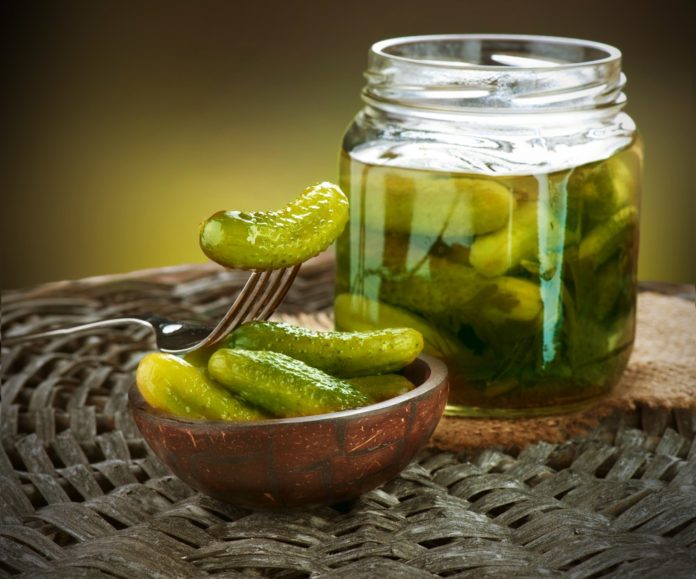Mastering food preservation has been key in allowing humans not only to survive, but also flourish. Thankfully, with the invention of refrigeration and modern food packaging, we don’t have to worry about survival in the same way, but when it is food that you have grown yourself, you want it to last as long as it can, in part to be economical, but also because of what that food represents, time, sweat and summer.
Drying is most likely the oldest form of food preservation and in the past I have written about drying fruit and herbs. I don’t know if curing garlic would count as drying, but last year I saved enough Red Russian garlic to last me throughout the year, keeping my fingers crossed that it wouldn’t shrivel up or sprout like it has in the past. I am pleased to say that I was successful and that I am still using garlic from last year that looks fresher than anything I would buy in a grocery store. The secret was storing my bulbs in a fabric onion bag that I bought at a kitchen store and then hanging that bag from a shelf in a cool storage room in my basement. Thankfully the bulbs do not smell once they are past the curing stage, which I do in the garage. Once I put them in storage, the herbs like lavender, rosemary, mint and oregano, which I usually have drying nearby, cover any lingering smell.
Pickling is another common storage method that has a long history and can help to store a wide variety of vegetables. So far, I have only tried to pickle carrots and beets, but one day I will get a little more adventurous. Perhaps when I finally figure out how to successfully grow cucumbers I can make some dill pickles.
Freezing is the new kid on the block when you consider the culinary history of human kind, but probably the one many rely on the most. I have to admit that I am a lazy freezer, who never blanches anything and only chops or preps what I absolutely must. Some years, I don’t even have time to pit all of the cherries my two trees give me and end up freezing half of them unpitted to use later for juice or squeeze through a sieve for a rustic puree. Zucchini gets either grated or chopped before it goes in, but as for kale, I just cram as much as I can in a bag and then chop or crumble later as needed. Almost nothing beats frozen saskatoons straight out of the bag, unless you blend them with a hint of lemon and a little sugar. I also like to freeze several herbs. Some lose their potency if you don’t freeze them in oil or water, but I find that dill, mint, and sage all freeze well on their own.
Fermenting is an old method of food storage that is new to me, but quickly becoming a favourite. A little over a year ago I took a series of classes offered at The Light Cellar in Bowness, where I learned a lot about the health benefits of fermentation, along with how easy it really is to do. On my own I started to make ginger bug and sauerkraut, enjoying that I could play with flavours by adding different herbs and vegetables, many from my own garden. Once I was comfortable with this, I decided to try my hand at my true fermenting love, kombucha. For those who are not familiar with this beverage, kombucha is a probiotic drink made from sweet tea fermented with a scoby, or symbiotic culture of bacteria and yeast. After sitting for about a week, the bacteria and yeast eat the sugar, leaving behind a tangy tea, which can be bottled by itself, or flavoured with a variety of herbs and fruit. When I first started brewing, I would buy organic blueberries and mix those with some of my dried lavender, but then I realized that frozen saskatoons were even better, and I had a freezer full of them. In my latest batch I decided to try using some frozen sour cherries. I had to add a little more sugar than I usually do, but the end result is really good.
To make kombucha you need a scoby. I got mine from The Light Cellar, but other than that, I don’t know where you can purchase them. I regularly have at least six or seven extra scobys and starter tea that I would be willing to give away if anyone wanted to contact me through the garden email. Aside from a scoby, all you need is tea and sugar, preferably organic, and a glass vessel at least ½ litre larger than the amount of kombucha you wish to brew.
Jolene’s Basic Kombucha
Ingredient ratio: I make my tea weaker than some, hence the range
| Water | Tea | Sugar | Scoby | Starter Tea |
| 1L | 1-2 bags | ¼ cup | 1 small | ½ cup |
| 2L | 2-4 bags | ½ cup | 1 small | 1 cup |
| 4L | 4-8 bags | 1 cup | 1 large | 2 cups |
- Boil water for your tea in a large pot for at least 10-15 minutes at a hard boil to get rid of the chlorine. I usually start with an extra ½ to 1 cup per litre to account for evaporation. If I end up with more water than I need, I just add a little more sugar or more tea or remove the extra water.
- Once the water has boiled for long enough, turn the heat off and add your tea. I generally leave it to steep for at least 20 minutes, longer when I use less tea, and mix in the sugar, stirring until it dissolves.
- Set your tea aside to cool. I make eight litres at a time, so I generally cover mine and let it sit overnight.
- Once your tea has cooled to room temperature you combine the tea, scoby, and starter tea in a glass fermenting vessel (I use two large 4L+ jars) and cover the top with something that will keep contaminants out but allow oxygen in, like a tea towel or paper towel held down with an elastic band.
- Depending on how tart you like it and how warm the room you are storing it in is, you will have kombucha in 5-10 days.
- Bottle your kombucha plain in a sealable container or add additional flavouring and sweetener. Close lids tightly and leave at room temperature for a few days to allow a secondary fermentation to carbonate the tea. The higher the sugar content the more fermentation pressure will build, so check your bottles regularly when you start doing this.
If you want to try your hand at brewing kombucha it really is very easy, but I do recommend you do a little research, either online or get one of the many great books out there before you get started. While this covers the basics, there is more you should know.
Contributed by Jolene Ottosen for the Chaparral Green Thumbs
If you are interested in more information or curious about upcoming events, check us out at http://www. chapgreenthumbs.ca/ or email us at [email protected]










